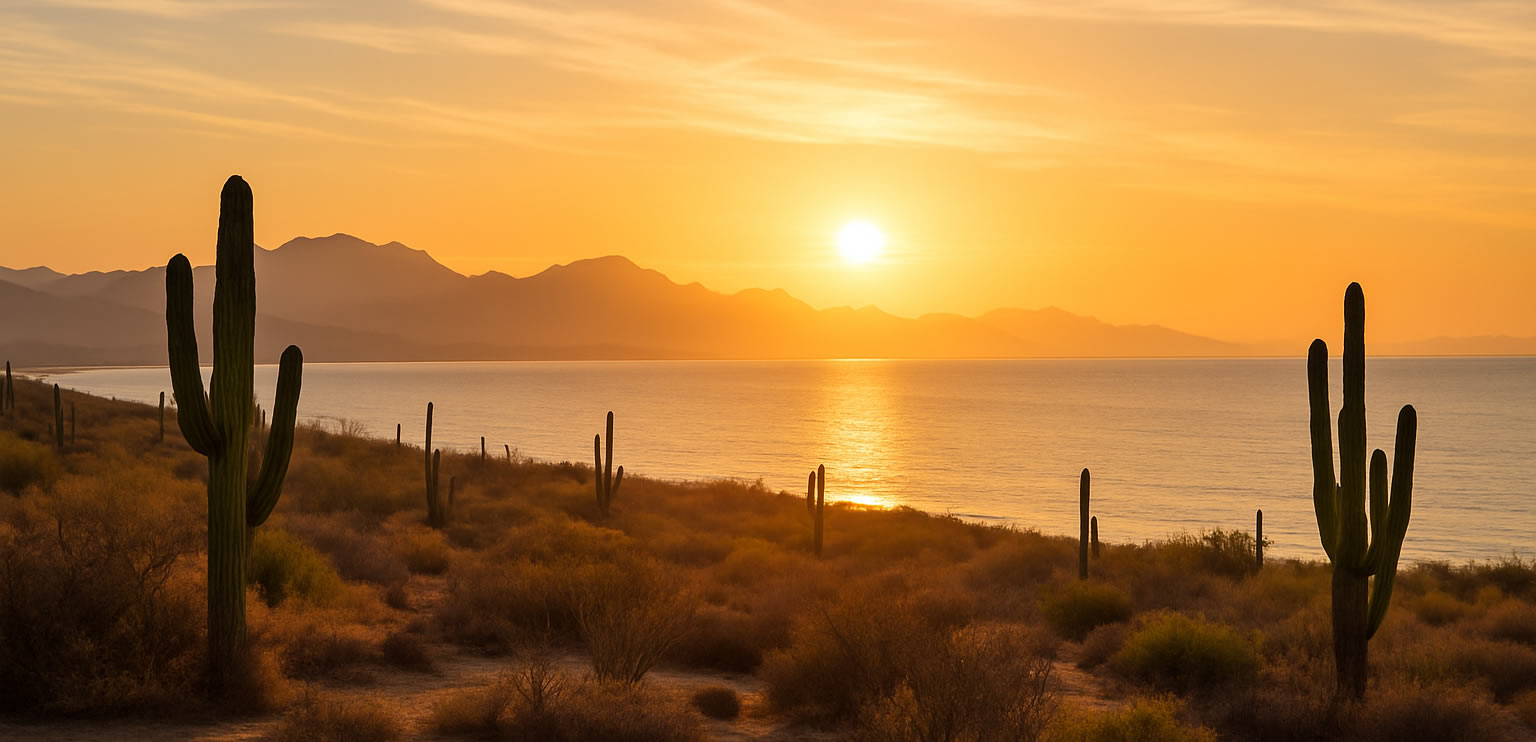Transforming from Within:
A Call from Baja California Sur

Executive Summary: The 2021–2027 State Development Plan for Baja California Sur (BCS) is more than a government roadmap; it is a vision of a just, inclusive, and participatory society. It is built upon five fundamental axes: Well-being and Inclusion, Peace and Security, Inclusive Economic Reactivation, Infrastructure and Sustainability, and Transparency and Accountability. With over 1,100 lines of action and 700 defined goals, it charts a path for structural change based on citizen input, democratic planning, and sustainable development aligned with Mexico's National Development Plan and the 2030 Agenda.
1. Well-being and inclusion: A human-centered vision
Axis I of the Plan asserts the right to dignity and equity for all. As stated in the introduction: "No one left behind, no one left out, is a top priority of this government." The state commits to a multi-dimensional well-being strategy encompassing health, education, inclusion, culture, housing, access to basic services, and protection for vulnerable populations—including "people with disabilities, syndromes and disorders; sexual diversity; Indigenous, migrant and Afro-Mexican populations".
Crucially, the plan recognizes mental health, addiction prevention, and suicide as public priorities: "for the first time... includes topics not previously covered in other plans, such as... prevention, assistance, and detoxification for users of hard drugs and prevention, care and grief support for suicide." These components highlight a comprehensive, transformative understanding of social health.
2. Peace, security, and community: Building trust and justice
Axis II lays the foundation for peaceful coexistence, not through repression, but by strengthening rights, justice, and community resilience. Key issues addressed include "femicide, missing persons, human trafficking," as well as "a just and equitable rule of law" and citizen-focused public safety.
The plan emphasizes shared responsibility, with a commitment to Protection Civil systems and risk prevention. Baja California Sur ranks among the safest states in Mexico, and the plan seeks to consolidate this status through institutional reform and human rights-based approaches.
3. Inclusive economy: Tourism, employment and local development
Axis III identifies tourism as the leading engine of economic recovery, especially post-COVID, noting that "Los Cabos and La Paz jointly contribute approximately 87.4% of the production value, generated by 80.6% of the population." The plan also addresses agriculture, aquaculture, fishing, forestry, and internal markets with strong emphasis on formal employment, training, and labor inclusion.
Recovery from the pandemic is central: "by the end of 2021... employment losses had not only been recovered, but 11,000 new jobs were generated." However, the plan highlights three remaining structural challenges: "economic diversification, regionalization, and improvement in wage levels." These resonate with CURADO’s advocacy for regenerative tourism, inclusive investment, and long-term place-based development.
4. Infrastructure, environment and resilience
Axis IV promotes infrastructure as a tool for equity and sustainability. Investments will target "hydraulic, urban, mobility, transportation, electrical and telecommunications infrastructure" while addressing climate change, land use planning, and protection of domestic animals. It acknowledges a "50% annual decrease in infrastructure investment from 2018 to 2021," and outlines efforts to reverse this through multi-level cooperation.
The environmental strategy stands out: BCS holds "11 protected natural areas" and seeks to become a "national leader in sustainable resource management." Instruments include the State Climate Change Action Plan, the State Water Plan, and environmental impact verification systems. It also proposes "green architecture, responsible urban development, circular economy, and use of alternative energies."
5. Participatory governance and transparency as a cultural norm
Axis V reinforces a core principle: "A democratic, transparent and open state that renders accounts to society." It outlines plans to modernize public administration, implement anti-corruption measures, and institutionalize citizen participation. The document repeatedly affirms: "with the people, everything; without the people, nothing."
Through entities like COPLADEBCS and 17 subcommittees, the plan was constructed via consultation with over 100 public proposals, 49 working sessions with officials, 44 meetings with civil society, and 5 dialogues with legislators. The emphasis on co-responsibility and civic trust is integral to how CURADO imagines the future of transformative hospitality and public engagement.
Action Points for the Hospitality and Wellness Sectors
-
Engage with vulnerable groups through inclusive tourism programs and job creation initiatives.
-
Partner with municipalities to co-develop regenerative tourism projects aligned with territorial planning.
-
Develop public-private collaborations to design emotional and resilient infrastructure.
-
Participate in planning forums, transparency boards, and accountability systems.
Final Thought
The 2021–2027 State Development Plan is not merely administrative—it is a collective narrative authored by and for the people of Baja California Sur. As the document states: "This is the route drawn with a clear direction, to achieve the state our parents dreamed of and the home our children deserve."
At CURADO, we echo this sentiment. This plan is an invitation to rethink how we build, serve, and belong. Transformation, as always, begins from within—and it begins with all of us.
Sources: Plan Estatal de Desarrollo de Baja California Sur 2021–2027, Gobierno del Estado de BCS > https://www.bcs.gob.mx/plan-estatal-de-desarrollo-de-baja-california-sur-2021-2027/